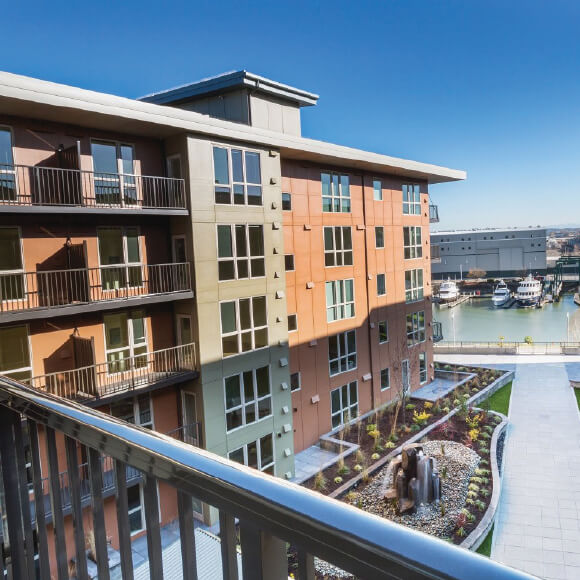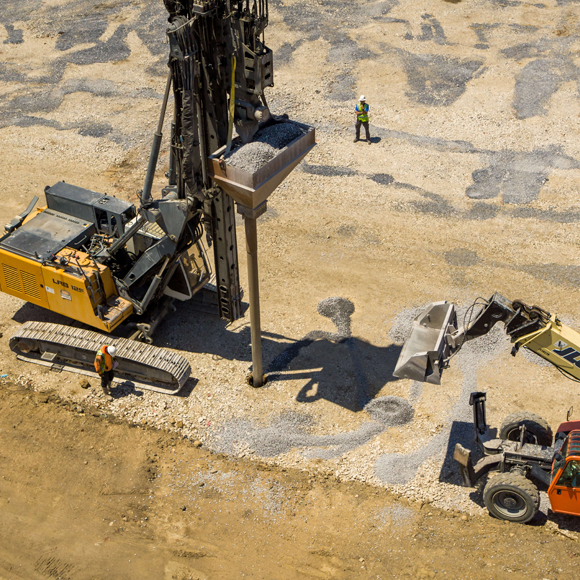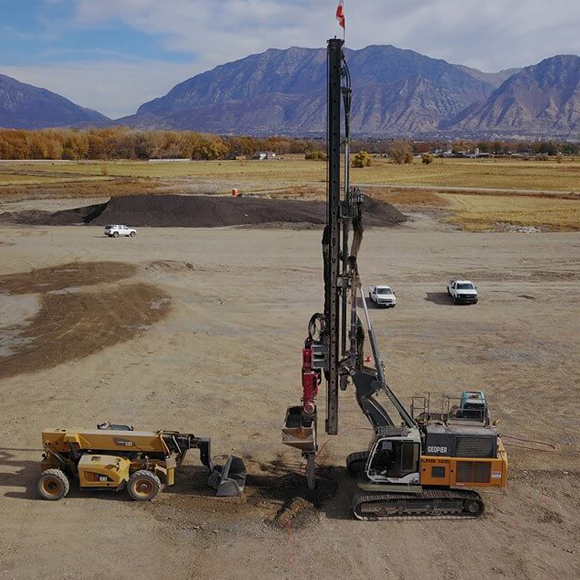
The Henry Apartments
A combination of grouted and non-grouted Geopier Impact® elements provided a robust design and installation for a site with highly compressible soils.
- Owner: The Henry Group, LLC
- General Contractor: Sierra Construction ems
- Geotechnical Engineer: GeoEngineers
- Structural Engineer: BCRA Design
The project consisted of a 7-Story mixed-use structure along the historic waterfront of the Thea Foss Waterway of the Commencement Bay in Tacoma, Washington. Construction included a 2-level parking garage and 5-level luxury apartment complex consisting of 161 units with column loads up to 700 kips and wall loads up to 23 kips per foot.
Subsurface conditions consisted of 4 feet of gravel fill underlain by varying thicknesses of very soft to very stiff, loose to medium dense, silt, sand and gravel. Contained within this alluvial zone are interbedded layers and isolated pockets of partially decomposed wood chips and timber debris. Explorations indicate that this zone extends to depths ranging between about 30 to 50 feet. Below the alluvial zone, native dense to very dense silty sand, sand and gravel was encountered. Groundwater was generally encountered around about 5 feet below grade.
Geopier Rammed Aggregate Pier® (RAP) and rigid inclusion techniques were selected to provide foundation and floor slab support. Using the Geopier displacement Impact® system negates the need for casing and expedites the construction process to create grouted Impact elements for support of the heavy foundation loads. The grouted elements (rigid inclusions) enable the heavy foundation loads to be transferred to the lower native dense sand material and control settlement and provide a high bearing capacity for footing construction that would otherwise require expensive deep foundations. The non-grouted Impact elements (RAP) were chosen to support the lightly loaded floor slab to limit the bending stresses in the slab and control cracking and settling of the slab on the very soft organic ridden alluvial material. An additional two rows of confining elements were installed along the eastern wall to minimize differential seismic settlement. Over 1,300 Rammed Aggregate Pier and rigid inclusion elements were installed to about 30 feet below grade.



